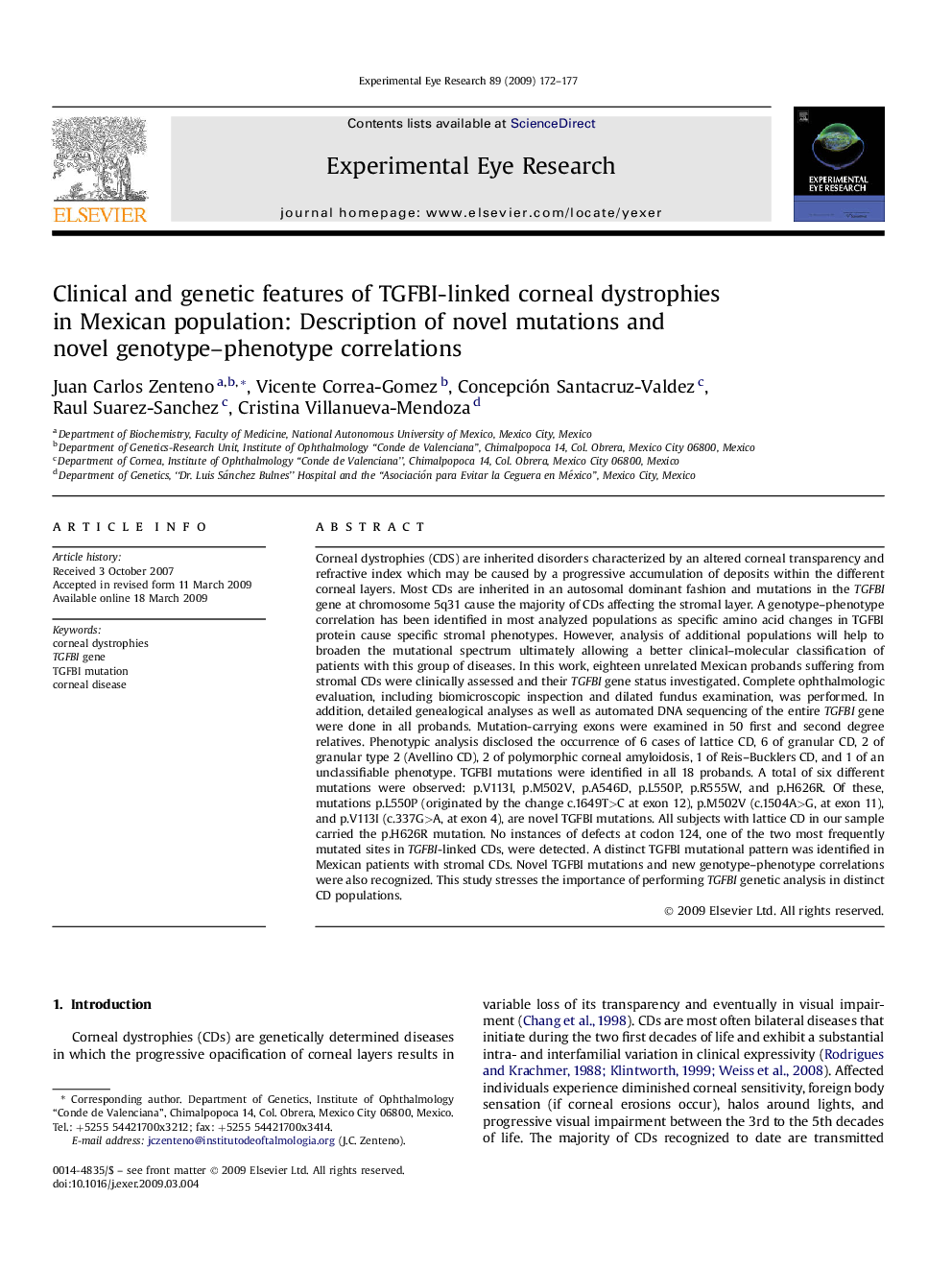| Article ID | Journal | Published Year | Pages | File Type |
|---|---|---|---|---|
| 4011924 | Experimental Eye Research | 2009 | 6 Pages |
Corneal dystrophies (CDS) are inherited disorders characterized by an altered corneal transparency and refractive index which may be caused by a progressive accumulation of deposits within the different corneal layers. Most CDs are inherited in an autosomal dominant fashion and mutations in the TGFBI gene at chromosome 5q31 cause the majority of CDs affecting the stromal layer. A genotype–phenotype correlation has been identified in most analyzed populations as specific amino acid changes in TGFBI protein cause specific stromal phenotypes. However, analysis of additional populations will help to broaden the mutational spectrum ultimately allowing a better clinical–molecular classification of patients with this group of diseases. In this work, eighteen unrelated Mexican probands suffering from stromal CDs were clinically assessed and their TGFBI gene status investigated. Complete ophthalmologic evaluation, including biomicroscopic inspection and dilated fundus examination, was performed. In addition, detailed genealogical analyses as well as automated DNA sequencing of the entire TGFBI gene were done in all probands. Mutation-carrying exons were examined in 50 first and second degree relatives. Phenotypic analysis disclosed the occurrence of 6 cases of lattice CD, 6 of granular CD, 2 of granular type 2 (Avellino CD), 2 of polymorphic corneal amyloidosis, 1 of Reis–Bucklers CD, and 1 of an unclassifiable phenotype. TGFBI mutations were identified in all 18 probands. A total of six different mutations were observed: p.V113I, p.M502V, p.A546D, p.L550P, p.R555W, and p.H626R. Of these, mutations p.L550P (originated by the change c.1649T>C at exon 12), p.M502V (c.1504A>G, at exon 11), and p.V113I (c.337G>A, at exon 4), are novel TGFBI mutations. All subjects with lattice CD in our sample carried the p.H626R mutation. No instances of defects at codon 124, one of the two most frequently mutated sites in TGFBI-linked CDs, were detected. A distinct TGFBI mutational pattern was identified in Mexican patients with stromal CDs. Novel TGFBI mutations and new genotype–phenotype correlations were also recognized. This study stresses the importance of performing TGFBI genetic analysis in distinct CD populations.
